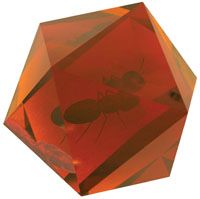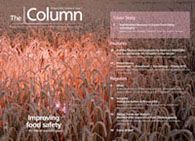A fine amber line
Hyphenation between thermal desorption (TD), gas chromatography and mass spectrometry detection has been employed by a team from Romania to find if it is possible to discriminate between Romanian and Baltic ambers, two closely related amber species.

The chemical composition of amber depends on a number of factors. Often mistaken as a gemstone, amber is, in fact, the fossilized resin of trees such as firs and spruces and it’s the type of plant as well as the age of the sample and the conditions that it was created in and exposed to since then that play their part in its structure. The geographical and biological origins of amber jewellery and amber ornamentation can provide historians with information about the people who made and wore them. This is why hyphenation between thermal desorption (TD), gas chromatography and mass spectrometry detection has been employed by a team from Romania1 to find if it is possible to discriminate between Romanian and Baltic ambers, two closely related amber species.
A TD unit equipped with a hydrophobic trap collected the volatile compounds from the samples; these were then desorbed in splitless mode to a GC linked to a single quadrupole mass spectrometer operating in electron ionization mode. Chromatographic data analysis was based entirely on automated mass spectral deconvolution and identification system (AMDIS) software to produce deconvoluted mass spectra that were used to build up a mixed mass spectra and relative retention scale library. Analysing a set of known origin showed good discrimination between Romanian and Baltic samples and when the process was applied to five ambers of unknown origin, all were successfully shown to fit into one of the two groups.
1 M. Vîrgolici et al., J. Chromatogr. A, 1217(12), 1977–1987 (2010).
This story originally appeared in The Column. Click here to view that issue.

Evaluating the Accuracy of Mass Spectrometry Spectral Databases
May 12th 2025Mass spectrometry (MS) can be effective in identifying unknown compounds, though this can be complicated if spectra is outside of known databases. Researchers aimed to test MS databases using electron–ionization (EI)–MS.

.png&w=3840&q=75)

.png&w=3840&q=75)



.png&w=3840&q=75)



.png&w=3840&q=75)










